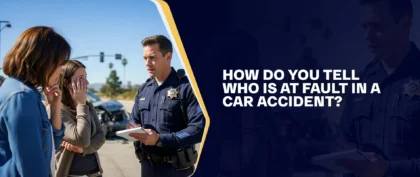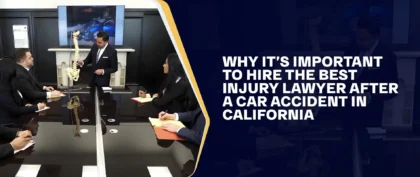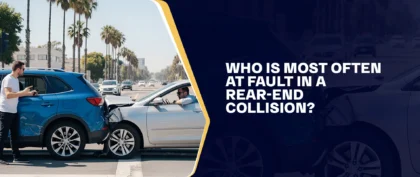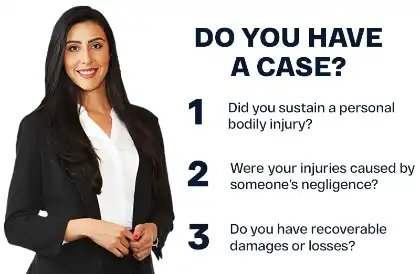Table of Contents
This Technological Achievement May Help Humans Create Safer Vehicles
Cutting-edge technology is being used in Australia to demonstrate just how vulnerable humans are to the collision forces caused by an auto accident. In particular, the state of Victoria has gained a reputation for its innovative and dramatic road safety campaigns. One of these campaigns had the Transport Accident Commission partnering with a leading trauma surgeon, a crash investigator, and a notable Melbourne artist to produce Graham. Graham is “an interactive lifelike sculpture demonstrating human vulnerability.”
Graham is much more than a sculpture, however. It has been designed with features that might have been present in humans had we evolved to withstand the forces of a brutal vehicle collision. Humans evolved long before cars were invented. Our bodies are not designed to handle the strong forces created by a clash between two massive, powerful vehicles. By sculpting a model of how humans would have to evolve to withstand such forces, the Victorian government hopes to show just how vulnerable we are while on the road.
In addition to interacting with Graham online, the public can also use Google Tango (a comprehensive augmented reality technology) to better understand Graham’s features and how they would protect him in a collision. The Victorian government has also produced educational guides and a school curriculum for students who study Graham.
Graham is a dramatic departure from standard human features. By merely looking at photos, one can see how different he is from current human development. It is a stark reminder that humans are unprepared to withstand the forces of a car accident. This is why so many accidents are fatal.
For victims who are facing the aftermath of a serious crash, experienced car accident lawyers can provide guidance and support. Call (888) 488-1391 for a free initial case review and advice from our team of accident lawyers.
Just How Low Is Human Tolerance For Collisions?
To comprehend the vulnerability we face in collisions, it is helpful to examine fatality rates based on speed. The Meet Graham project reports that speeds as low as 30 kilometers per hour (just under 19 miles per hour) can be fatal without any protection. This explains why pedestrians, who lack the protection of a vehicle, are especially susceptible to harm. As a result, pedestrian injuries are more common and often more severe in collisions, including those involving self-driving cars. Unlike vehicle occupants, who are protected by airbags and seat belts, pedestrians are subject to the full force of a heavy steel vehicle crashing into their bodies.
As speeds increase, the risk of fatal outcomes for unprotected victims can rise significantly. Studies show that the risk of fatality increases substantially with each increment in speed, particularly above 30 kilometers per hour (km/h) or 19 miles per hour (mph).
We have made significant progress in implementing safety measures, which have substantially reduced these numbers. Many auto accident victims are able to survive collisions that occur at speeds of 60 mph or even higher. This is largely due to enhanced steel vehicle frames, airbags, and seatbelts. The next generation of safety features (like automatic braking, backup cameras, and lane drifting warnings) is projected to show even more progress in reducing accident fatality rates.
It is important to remember that these are merely safety tools. Ultimately, we are vulnerable humans whose bodies are not built to withstand the forces of a crash, which is why fatal car accidents still occur. For victims, consulting experienced car accident lawyers can be beneficial in understanding their rights and the legal options available after a serious collision.
The Features That Protect Graham In An Auto Accident
To create Graham, scientists considered the features necessary to protect a human in a car accident. The scientists then worked with Melbourne sculptor Patricia Piccinini to create a model for these features. Here are the features that protect Graham from the forces of a collision:
- Graham’s Brain — The brain is one of the most vulnerable parts of the human body. In a car accident, the skull protects the brain from collisions with outside forces. However, the brain can be injured by hitting the skull itself. In fact, many collisions cause the brain to hit the skull twice: first in the front, and then it is forced to the back of the skull by the force of the initial impact. To combat this problem, Graham has been designed with more cerebrospinal fluid and ligaments in his skull. His brain is the same size as ours, but it has more cushion and protection from the force of a collision. This is why Graham’s head is so dramatically oversized.
- Graham’s Skull — Graham’s skull is designed to fracture. This is how helmets work: by absorbing the impact of a collision, the helmet diverts the force away from the brain. Graham’s skull is bigger than ours. It also features built-in “crumple zones” designed to break. Much like a helmet, Graham’s skull diverts the force of the collision away from his brain.
- Graham’s Face — Graham has a flat, sunken face. This is designed to protect the small, delicate facial bones from the force of a collision with a steering wheel or windshield. Our noses protrude, making them more likely to be broken in a car accident. Broken noses frequently interfere with sinuses and other delicate facial areas. Graham has extra fat tissue around the protruding areas (such as cheekbones) in order to protect these bones from fracturing further. This sunken face, together with his dramatically oversized head, gives Graham a startling, thumb-like appearance.
- Graham’s Neck — The neck is another highly vulnerable area. A car accident subjects it to forces that the structure is not designed to take. This is why so many auto accident victims suffer whiplash and other neck injuries. To make the problem worse, the neck houses the spinal cord, a sensitive and vital structure of the human body. This is why trauma often leads to paraplegia and quadriplegia. To combat this problem, Graham has no neck at all. (This, too, adds to his thumb-like appearance.) His ribs extend all the way up to his skull, further enhancing the support structure. In a real human, this design would limit mobility and prevent one from turning their head. For Graham, this is simply another level of protection that enables him to withstand a car crash better.
- Graham’s Rib Cage — Our rib cages serve as one of the body’s strongest protective structures. They protect many vital organs (including the heart and lungs) from the forces of a collision. Graham’s ribs have been strengthened, but his rib cage is structured much like ours. He has a large, barrel-like chest to better withstand a collision. He also has sacks between each of his ribs. These act as airbags, absorbing the force of a crash and preventing forward momentum. They also add yet another layer of protection for the heart and other vital organs.
- Graham’s Skin — Cuts and abrasions are usually the least severe injuries a victim experiences in a car accident. They can, however, cause other complications, such as exposed nerves. This can lead to lasting nerve damage, which may cause loss of function or pain. This was an easy fix – Graham was given skin that is thicker and tougher. The arms, hands, and elbows were further reinforced. These areas are often outstretched in a collision and are likely to sustain cuts, bruises, and road rash.
- Graham’s Knees — Human knees bend in only one direction. This makes it more likely for a pedestrian to break their knee after being struck by a car. Graham’s knees allow for movement in every direction. They are reinforced with extra tendons, which add flexibility and reduce the likelihood of a fracture.
- Graham’s Legs and Feet — Human legs are also vulnerable in a collision. The shinbone is an exposed part of the body, and it has only a thin layer of skin covering it. Graham has an extra joint in his lower leg that allows for quick movements. These “spring-loaded” motions are similar to those of a deer or kangaroo, allowing for a faster escape from a collision.
While Graham shows us what the human body would need to survive a severe crash, real people aren’t built this way. Even collisions that seem minor can lead to broken bones, whiplash, or traumatic brain injuries. Experienced car crash attorneys can guide victims through the process of dealing with medical bills, long-term recovery needs, and the daily challenges that follow a serious crash.
Call Us For A Free Initial Case Evaluation With A California Car Accident Lawyer
As Graham shows us, the human body is nowhere near strong enough to withstand the forces of a vehicle collision. This is why auto accidents, including head-on collisions, can be so painful and devastating for the victims involved. Negligent drivers have a legal obligation to compensate victims for the losses associated with car accident injuries. This includes not only lost wages and medical bills, but also pain and suffering, as well as the loss of enjoyment of life.
Filing car accident claims can be complex, which is why working with car accident lawyers can be valuable. They can help you navigate the legal process to pursue fair compensation for your damages. At Arash Law, our California car accident attorneys understand common insurance practices and work to guide you throughout the claims process.
Call (888) 488-1391 to schedule your free initial consultation with our car accident lawyers. They work diligently to pursue compensation on behalf of the accident victims who have suffered losses due to the accident.






























